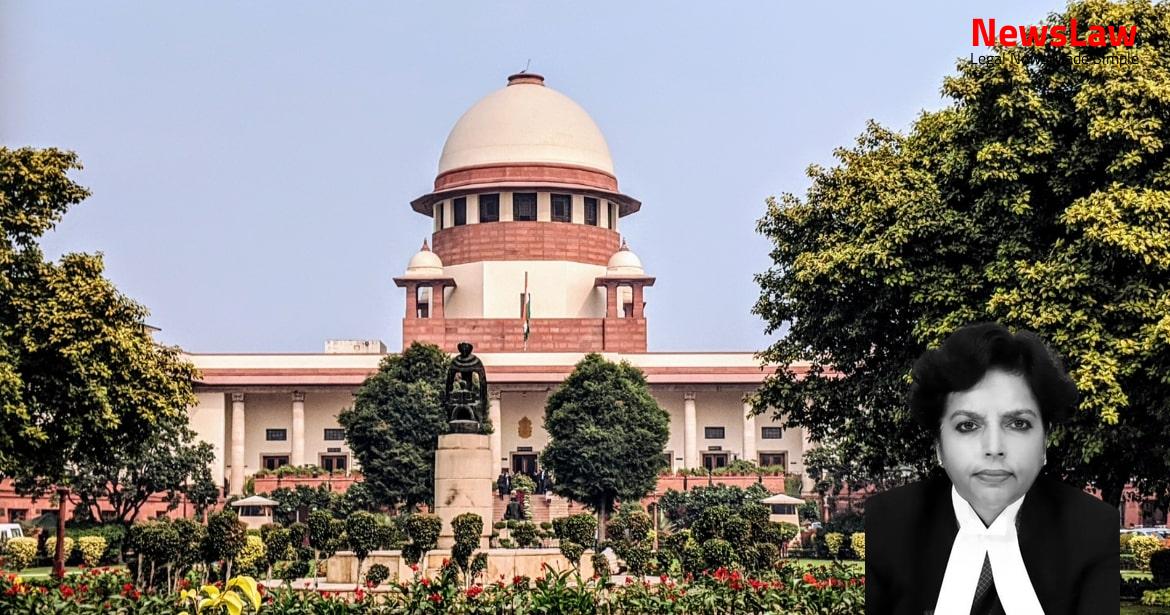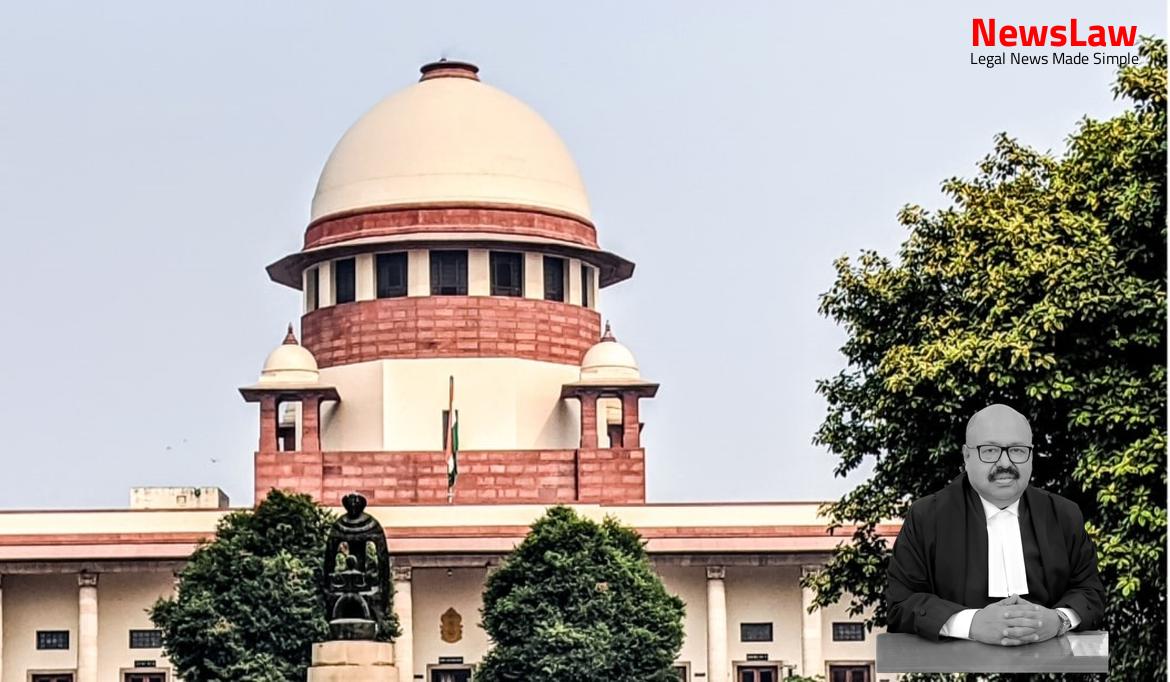In the legal battle over land acquisition in Sanjegaon, the Supreme Court has issued a crucial verdict. The case involves a dispute between the landowners and the State regarding compensation rates for Jirayat and Bagayat lands. The landowners challenge the High Court’s decision to reduce the compensation rates set by the Civil Court. Stay tuned to learn more about the outcome of this significant legal case.
Facts
- The State of Maharashtra issued a notification on 03.03.1994 for acquiring land in Sanjegaon, Taluka Igatpuri District Nasik.
- The appellants, as landowners, did not file any cross objection against the compensation determined by the Civil Court.
- The High Court partly allowed the State’s appeals and reduced the rate of compensation awarded to the landowners.
- The landowners (appellants) felt aggrieved by the High Court’s order and filed appeals in the Supreme Court.
- The LAO classified the land into three categories and offered compensation to the landowners.
- The landowners sought reference to the Civil Court under Section 18 of the Act, and the Civil Court partly enhanced the rate of compensation in their favor.
Also Read: Supreme Court Judgement: High Court’s Order Upheld in Case of [Respondent] v. [Petitioner]
Arguments
- The appellants (landowners) are appealing against the High Court’s decision to partly allow the State’s appeals and reduce the compensation rate for Jirayat and Bagayat lands.
- The appellants argue that the rates determined by the Civil Court were just and proper and should not have been interfered with by the High Court.
- They believe that the exemplars, especially (Ex-P-42), should have been applied for determining the market value of the acquired land.
- The appellants assert that in the case of agricultural land, the rate of a small piece of land can be considered when determining the price of a larger piece of acquired land.
- They argue that even though Ex-P-42 referred to a small piece of land, it should be used as a basis for determining the market value of the acquired agricultural land.
- Learned counsel for the respondent supported the well-reasoned order of the High Court
- The respondent’s counsel prayed for the dismissal of the appeals
Also Read: Enhancement of Compensation Awarded in Motor Vehicle Accident Case: Supreme Court’s Judgment
Analysis
- High Court’s reasoning and conclusion to partly allow State’s appeals and reduce rate of compensation deemed just and proper.
- The sale deed (EX-141) executed just a month prior to date of acquisition for a large chunk of land in the same village was relied upon by State’s counsel.
- Appellants’ counsel heavily relied on sale deed (EX-42) dated 04.07.1989 for determining market value of suit land.
- It was argued that relying on the price mentioned in EX-141 (dated 14.02.1994) showed High Court’s compensation determination to be on the higher side.
- The relevant sale deed to determine market value is considered to be EX-141 (dated 14.02.1994) by the court.
- Exclusive reliance on EX-42 (1989) for establishing land rates was not favored by the court for either restoring Civil Court’s rates or enhancing High Court’s rates.
- Details of sale deeds produced by State and landowners were considered by the court in determining market value.
- Merits were found lacking in the appeals after hearing counsel and reviewing case records.
- Reliance solely on EX-42 was found legally impermissible as it was of a small piece of land in 1989.
- It was noted that reliance on EX-141 could potentially lead to reduction of the rates determined by High Court for different land types.
- State’s acceptance of High Court’s determination without appeal led the court to not consider reducing the rate determined by High Court in the appeals.
- High Court’s appreciation of evidence, including the sale deeds, for determining market value was deemed appropriate by the court.
- The submission that price of a small piece of agricultural land can be considered for determining the value of a large chunk of land was not accepted.
- The marginal reduction of rates in two types of land, based on the reasoning of the High Court, was deemed acceptable.
- The High Court correctly considered all six sale deeds and concluded that the rates determined by the Civil Court for Jirayat and Bagayat lands were on the higher side and needed reduction.
Also Read: Case on Constitutional Validity of Section 35AC with High Court Dismissal
Decision
- Rate of Jirayat land reduced from Rs.169,231 per hectare to Rs.126,924 per hectare by the High Court.
- Rate of Bagayat land reduced from Rs.211,539 per hectare to Rs.158,655 per hectare by the High Court.
- The appeals challenging these rate reductions were dismissed as no merit was found.
Case Title: NAMDEO SHANKAR GOVARDHANE(D)THR.LRS.&ORS Vs. STATE OF MAHARASHTRA .
Case Number: C.A. No.-010217-010250 / 2011



